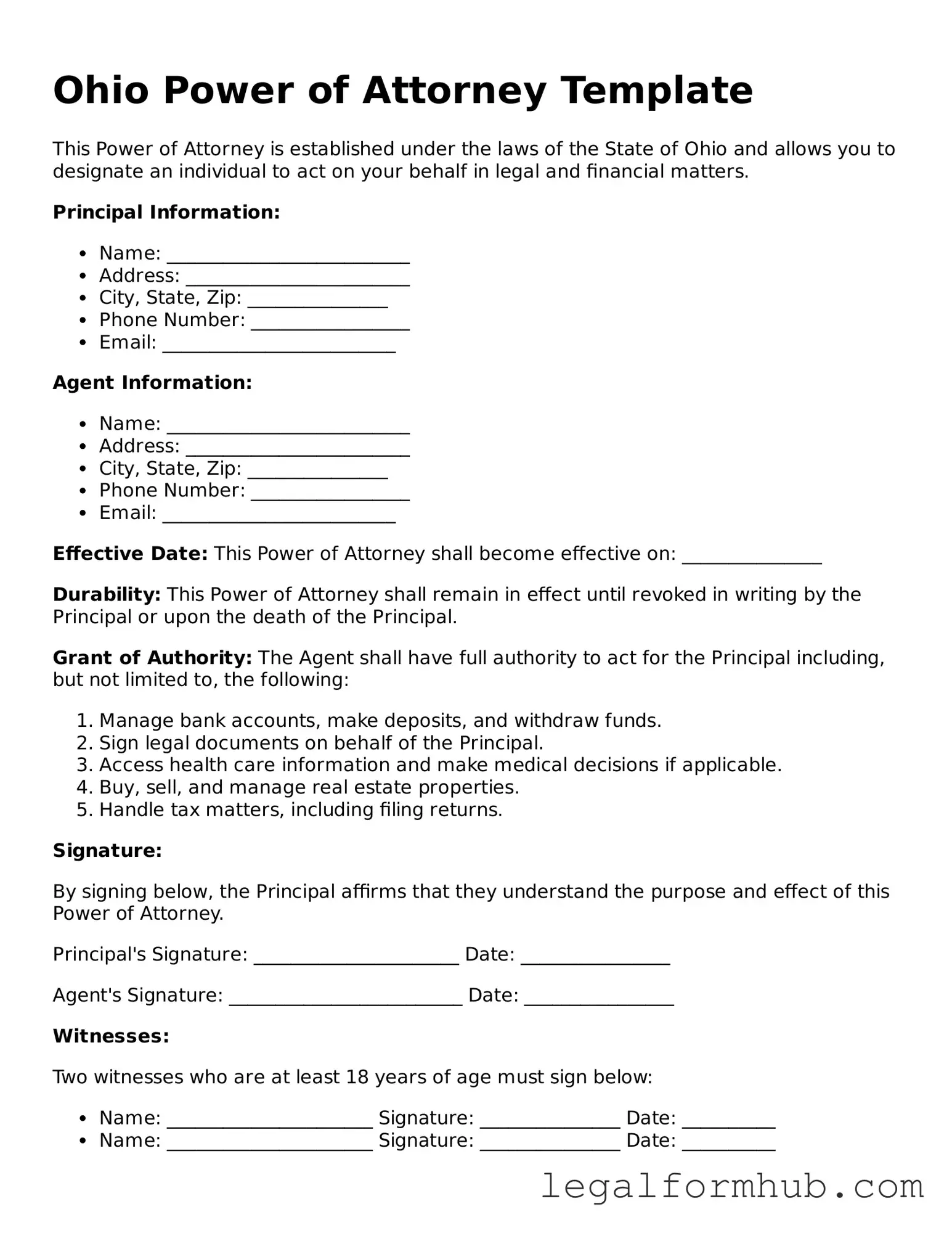The Ohio Power of Attorney (POA) form is similar to a Living Will, which allows individuals to express their wishes regarding medical treatment in the event they become unable to communicate. Both documents empower someone to make decisions on behalf of another person. However, while a POA can cover a wide range of financial and legal matters, a Living Will specifically addresses healthcare decisions, focusing on end-of-life care and medical interventions.
Another document akin to the Ohio Power of Attorney is the Healthcare Proxy. This legal instrument designates a person to make healthcare decisions for someone who is incapacitated. Like the POA, a Healthcare Proxy ensures that the individual's preferences are respected. However, the Healthcare Proxy is strictly limited to medical decisions, while the POA can also encompass financial and legal matters, providing broader authority.
The Advance Directive is yet another document that shares similarities with the Ohio Power of Attorney. An Advance Directive combines elements of both a Living Will and a Healthcare Proxy. It allows individuals to outline their healthcare preferences and designate someone to make decisions on their behalf. While the POA focuses more on financial and legal authority, an Advance Directive is centered on healthcare choices and preferences.
A Trust Agreement can also be compared to the Ohio Power of Attorney. A Trust allows individuals to manage their assets and designate how their property will be distributed after death. Both documents can involve a designated agent, but a Trust is primarily concerned with asset management and distribution, whereas a POA grants authority to manage a person’s affairs while they are still alive and potentially incapacitated.
Understanding the intricacies of various legal documents is vital for effective estate planning and personal decision-making. For those involved in activities that could potentially lead to liability issues, it's essential to be informed about waiver forms. The Fill PDF Forms can guide individuals in completing these necessary documents properly, ensuring that their interests are protected while navigating the complexities of legal obligations.
The Guardianship document is another legal instrument that resembles the Ohio Power of Attorney. A Guardianship is established by a court to appoint someone to make decisions for a person who is unable to care for themselves. While a POA is created voluntarily by the individual, a Guardianship is typically imposed by the court, making it a more formal and sometimes more restrictive arrangement.
The Financial Power of Attorney is a specific type of POA that focuses solely on financial matters. This document allows an appointed person to manage financial transactions, pay bills, and make investment decisions on behalf of another individual. While it is a subset of the broader POA, it is similar in that it grants authority to act on behalf of someone else, specifically in financial contexts.
The Durable Power of Attorney is another variation of the standard POA. This document remains in effect even if the principal becomes incapacitated. Like the Ohio POA, it allows an agent to make decisions on behalf of the principal. The key difference lies in its durability; it is specifically designed to continue functioning when the principal is no longer able to make decisions themselves.
Lastly, the Medical Power of Attorney is closely related to the Ohio Power of Attorney but is specifically tailored for healthcare decisions. This document designates an individual to make medical decisions on behalf of another person if they become unable to do so. While both documents grant authority to an agent, the Medical Power of Attorney is exclusively focused on health-related matters, differentiating it from the broader scope of the Ohio POA.
